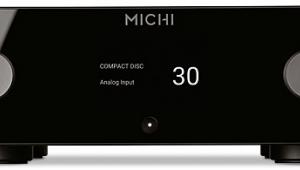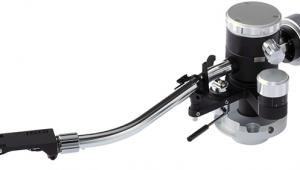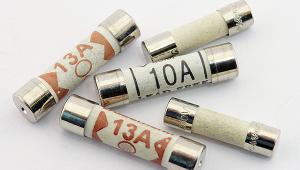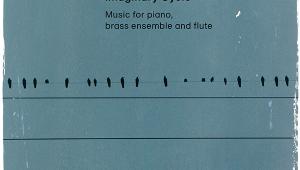Musical Fidelity A1 Integrated Amplifier

 First the Nu-Vista series, and now the iconic 'Class A' A1 integrated is reimagined by Musical Fidelity's new owners. How close to the original is this modern version?
First the Nu-Vista series, and now the iconic 'Class A' A1 integrated is reimagined by Musical Fidelity's new owners. How close to the original is this modern version?
Now that Heinz Lichtenegger, president of parent brand Audio Tuning, is comfortably behind the wheel of Musical Fidelity and the marque is churning out a steady flow of new products, including the rather notable Nu-Vista amplifiers [HFN Mar & Aug '23], it's good to see the full history of this British brand being revisited. The £1499 reissue of the 'griddle plate' A1 integrated amplifier is a case in point. Without losing sight of the past – or the original A1's flaws – it has been reworked by Simon Quarry, the engineer in charge of most new Musical Fidelity designs. The result is a fully symmetrical, Class A-biased amplifier that looks, and sounds, true to the original – it is not simply a vintage lookalike with unconvincing innards.
Let's cut to the chase: what about that hot top panel, which had some punters remarking that the first A1, designed by the late Tim de Paravicini, was also handy for grilling cheese sandwiches? While the new unit doesn't get quite as hot the old A1, it's still not a wise idea to leave your hand resting on it too long. To be fair, there are multiple warnings to that effect printed in large capitals throughout the bundled manual.
Case Study
Those familiar with the original A1 will be pleased to note little has changed in terms of industrial design. However, many won't remember that amp at all – because they weren't even born when the hi-fi press was gushing about its performance – and to modern eyes the new A1 might appear a bit peculiar. Its low 6.8cm height profile, and black metal case with a top that acts as one large heatsink, are reminiscent of a custom install product. Or maybe one of those amplifiers you see driving a subwoofer in the rear of a hot hatchback.
Still, the A1 appears well built and its styling exudes a different type of 'vintage aura' than retro hi-fi such as NAD's C 3050 LE [HFN Apr '23] or Mission's reissued 770 [HFN Jun '22], both of which look back to the 1970s. For some reason, when I first saw the A1 I was immediately reminded of my first Amstrad CPC computer, even though that was a lot more compact than today's full-width A1 amplifier. Maybe that's not exactly what Lichtenegger et al were aiming for, but then again, the 1980s rarely offered up design high points.

Pure Instinct
In its upgrade of a near 40-year-old concept, Musical Fidelity has resisted the temptation to stray far from the original specification by adding a digital stage or streaming functionality. The new A1 is a purely analogue amp, with six unbalanced RCA inputs – one for use with a turntable – flanked by tape out/pre-out RCAs and a single set of speaker terminals.
The A1's MM/MC phono stage is switched between modes by an authentic push-button on the rear that clicks nicely when pressed. The controls at the front feel very '80s too, with a sturdy on/off button forming the bottom half of a circle – the top half being a blue power LED. Two large circular knobs recessed into the fascia handle volume and input switching, though it's also possible to change the volume with the A1's back-to-basics remote control. Do this and you'll be greeted by a loudish motor turning the ALPS potentiometer. Operationally there's little hassle or complexity here, which will make for a nice change if you've been juggling the functions of a do-it-all streaming amp.
Under the hood, the design employed by the original A1 is by and large retained though it's now closer to the dual-mono ideal courtesy of separate transformer secondaries for the L/R channel PSUs. Inside, the alloy U-section to which the power transistors are bolted is now also connected to the main chassis as well as being 'bonded' to the top 'griddle plate' with heatsink compound. In the earliest A1s this alloy spine was simply held in place on the PCB by the transistors' legs – cue disaster if the top plate was pulled off by a curious enthusiast/reviewer…
Anyway, the preamp stage in the new A1 is unchanged, though Simon Quarry has added a 'direct' mode that bypasses it, and its +10dB gain, altogether. Officially, the Musical Fidelity A1 is slated to deliver 25W/8ohm, although PM's measurements shows it to be a bit more capable – the design 'slides', to quote the company's marketing department, into Class AB when pushed that bit harder.
![]() The Big Easy
The Big Easy
Although calling the sound offered by the A1 'warm' might come over as lazy journalism, this reissued amplifier does deliver your music with a nearly tube-like, organic presentation. There's an engrossing, massive feel to the performance, but also some softness to the top-end, depending on the loudspeakers with which it's used. Together with a bit of mellowness and smooth midrange handling, it's suited to both easy listening and more 'critical' sessions. It's reasonable to call the A1 a very versatile overperformer.






















































